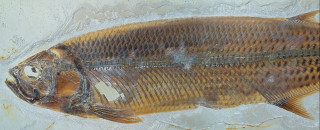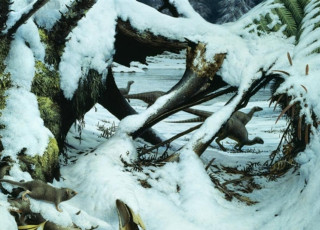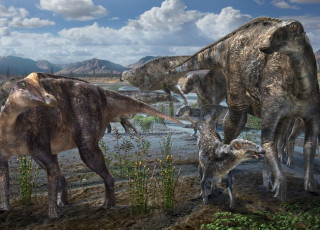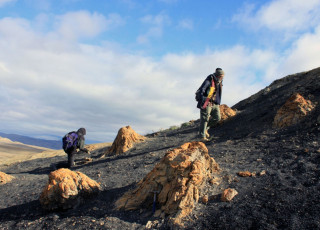Polar Dinofest: Kerin Claeson
By Riley Black
Dinosaurs frequently grab our attention with their sharp teeth and claws, but there is much more to the Mesozoic world than the "terrible lizards." Myriad other creatures thrived at the same time as our favorite dinosaurs, including creatures that have thrived in the seas. The oceans of ancient Antarctica were teeming with strange and fascinating organisms, including an entire prehistoric aquarium of fish. These scaly swimmers are the focus of Philadelphia College of Osteopathic Medicine paleontologist Kerin Claeson.
The seas were very different during the time that non-avian dinosaurs roamed the world. In the oceans, for example, there were no whales, seals, or other marine mammals. Those ecological roles were filled by reptiles. Plesiosaurs, or reptiles with long necks and four flippers, patrolled the waters off Cretaceous Antarctica, Claeson notes. In even older rocks, she adds, there are teeth from shark-shaped marine reptiles called ichthyosaurs. "Paleontologists know quite a bit more about these types of animals based on work in South America and Australia because Antarctica was once connected to both those continents," Claeson says, and future expeditions are likely to turn up more fossils of these creatures.
But Claeson's research focuses on different animals that were swimming through the prehistoric waters - fish. "My favorite of the sea monsters are the sharks," Claeson says. That's despite the fact that the fossil record of sharks can be difficult to track. Shark skeletons are mostly made of cartliage - the flexible tissue in your ears and the tip of your nose - and so their bones don't fossilize as readily as other fish. "Finding them in the fossil record is extra special," Claeson says, with teeth and the occassional vertebra being the only clues these marine predators left behind.
In addition to the sharks, the fossil record of Antarctica contains fish called ichthyodectiformes. That name roughtly translates to "fish biters," a whole family of bony fish that superficially looked like today's tarpon. Some of these fish grew to impressive sizes, some as large as modern great white sharks, and they even have a local connection. Not only are ichthyodectiform fish found in Antarctica, Claeson says, but also in the long-lost Western Interior Seaway that split North America in two during the Late Cretaceous. Utah's own Grand Staircase-Escalante National Monument contains fossils from this time, when the beehive state was a coastal marsh, and some of the fish that swam offshore belonged to the same group found in Antarctica. As Claeson puts it, "It's almost like Antarctica was in your backyard!"
Click Here to Explore More of NHMU's Polar DinoFest
Riley Black is the author of Skeleton Keys, My Beloved Brontosaurus, Prehistoric Predators, and a science writer for the Natural History Museum of Utah, a part of the University of Utah in Salt Lake City. Our mission is to illuminate the natural world and the place of humans within it. In addition to housing outstanding exhibits for the public, NHMU is a research museum. Learn more.



